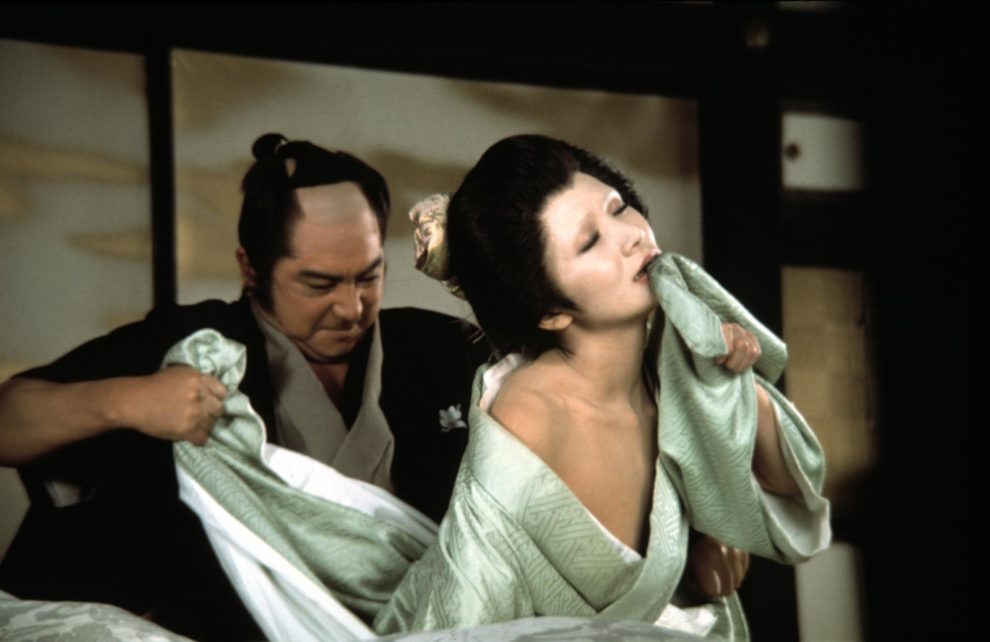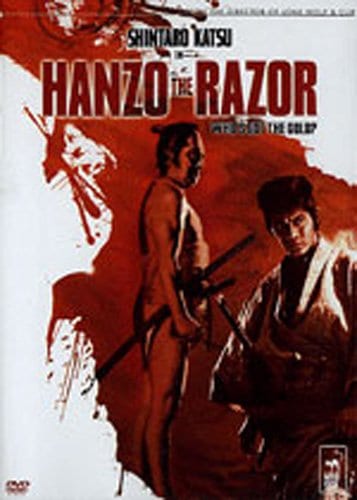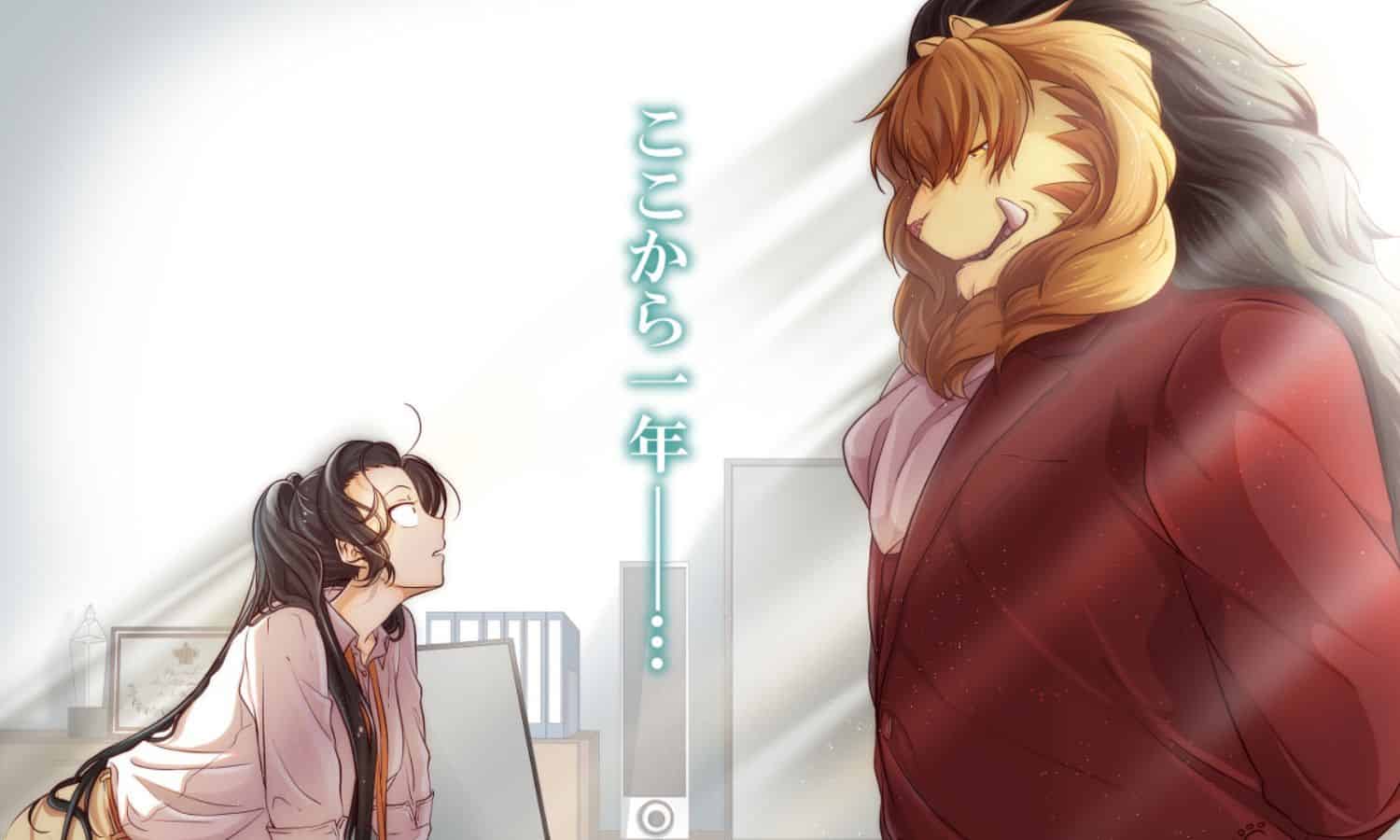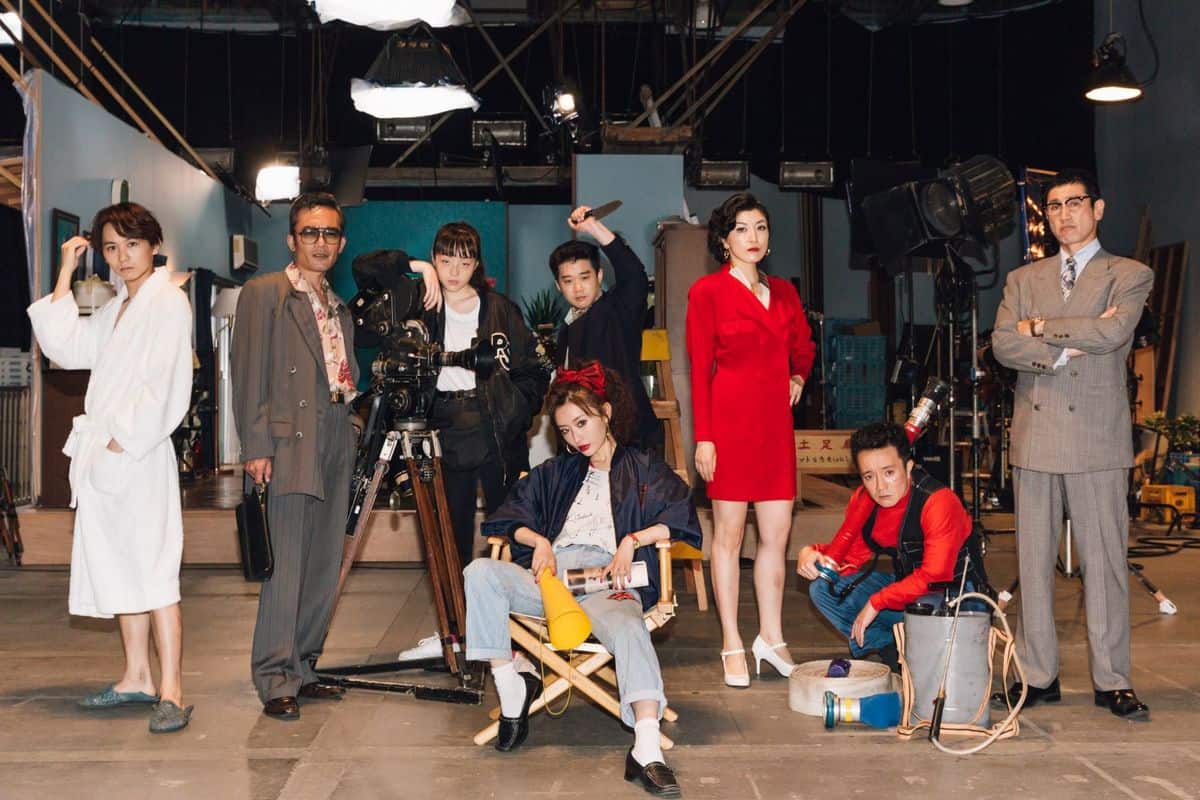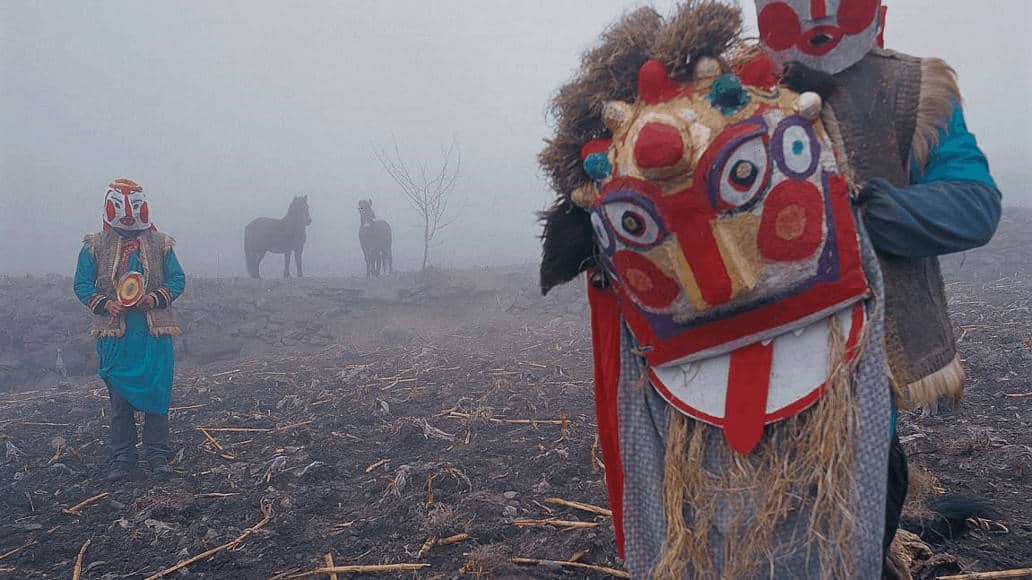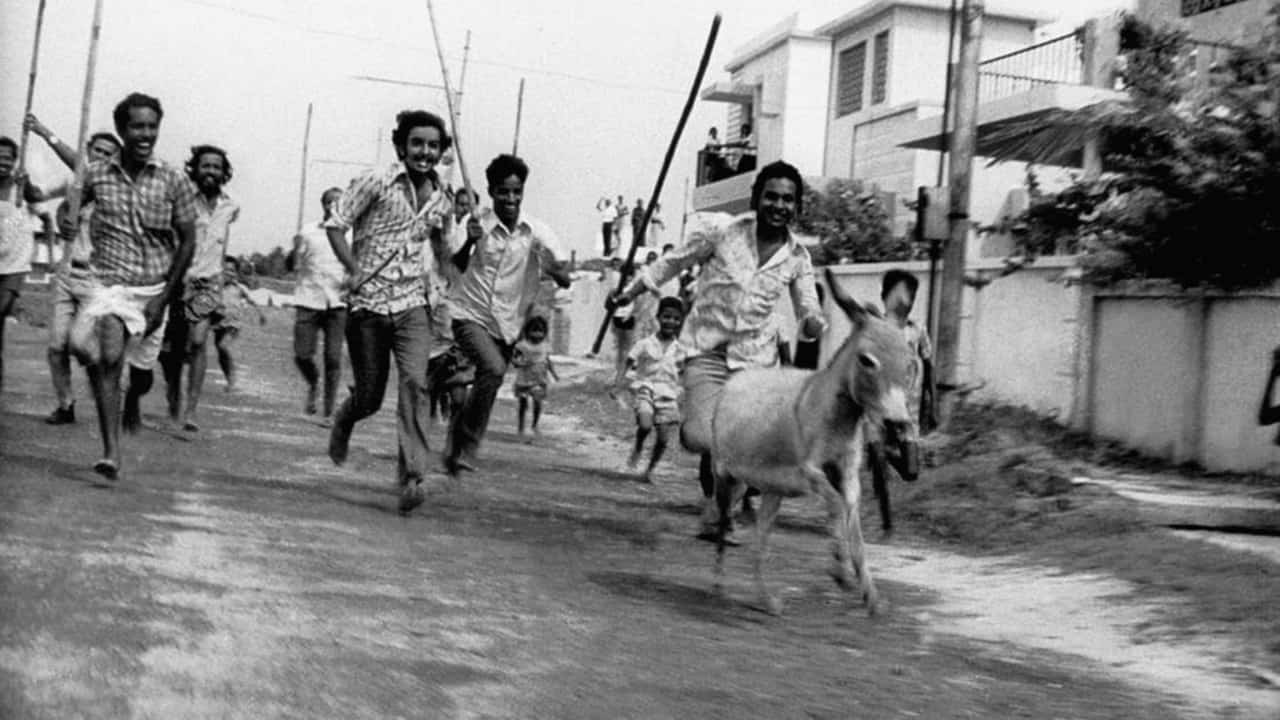Merely two years after kickstarting a supposed new franchise, the Hanzo the Razor saga came to an end, with the release of the third and final production of the series, “Hanzo the Razor, Who's Got the Gold?” In keeping with the tradition of the first two, this too had a different director at the helm in Yoshi Inoue. However, Yasuzo Masumura, the director of the second story, would stay on as the scriptwriter even if the directorial duties were handed over to Inoue, with this ending up being the final feature film he'd do.
Buy This Title
Things kick off when Hanzo Itami's assistants Devil-Fire and Viper encounter a female ghost while fishing at a lake and run to Hanzo to inform him of the same. Unperturbed and excited by the idea of catching and having sex with a “ghost”, Hanzo sets off to investigate and upon catching said ghost, he proceeds to interrogate her with his now-infamous investigation method involving an overhanging net and his massive member. This leads him to uncover yet another scheme involving the gold in the Treasury involving high-ranking lords, ladies and temple high priests.
Where the first Hanzo story had a straight-forward narrative that never lost focus of the core mystery it held, the second was a feature of two episodes. Yet, both these approaches worked narratively. This third outing, however, aims to take on too much for its own good, resulting in a number of story arcs that don't always conclude satisfactorily. It begins well, with a story that wouldn't feel out of place in a Scooby Doo episode, but once that mystery is solved way too early and Hanzo is set on the tail of the larger conspiracy, the script involves a few characters whose stories seem either unnecessary or ill-developed.

The part involving Genan Sugino, a forward-thinking physician, who warns the Shogunate of the issues with sticking to the traditional ways and not adapting to the advances of the West, for example, doesn't quite sit well with the overall story or get a satisfactory conclusion. The final showdown with the blind priest's bodyguard, also leaves much to be desired. On the other hand, there are other elements of the story that do work in its favour. The character of Heisuke Takei, a childhood friend of Hanzo's, is a welcome addition and helps add some humanity to the Edo lawman.
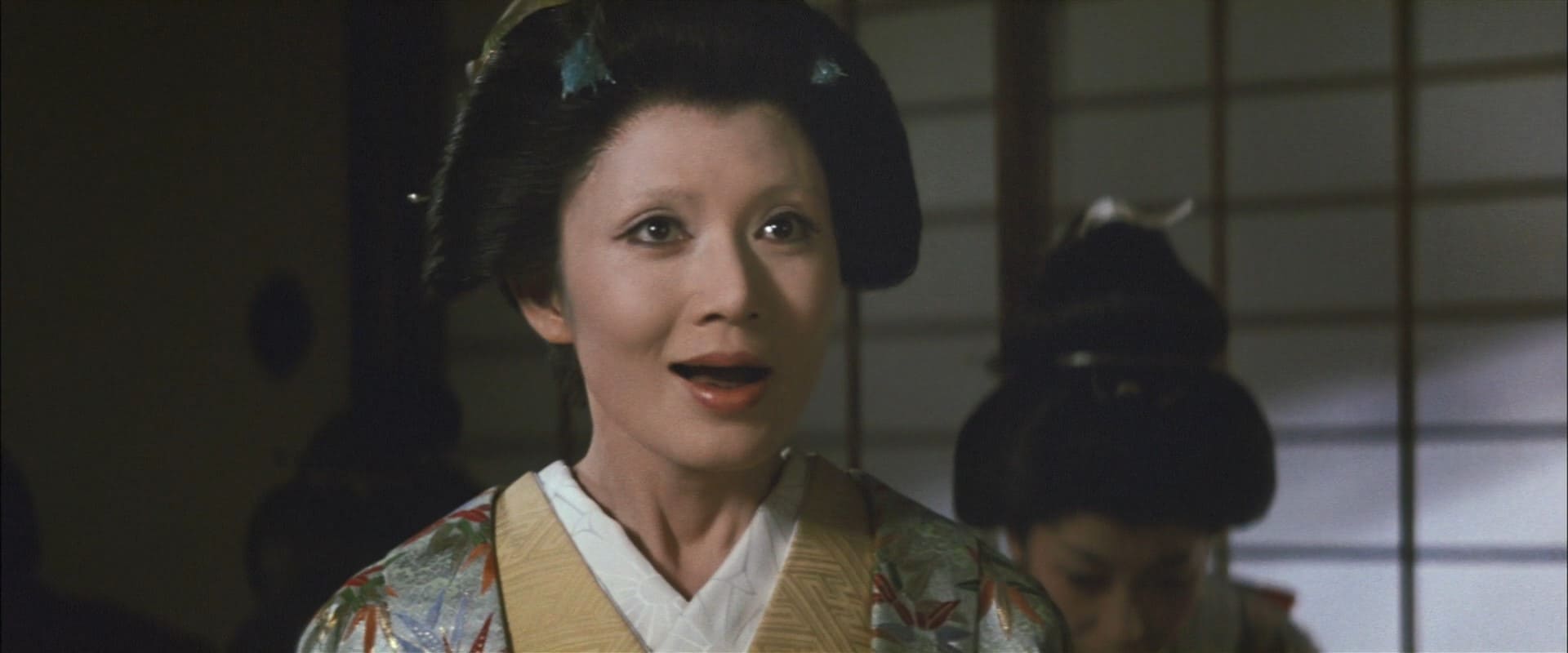
As an exploitation film, and indeed as a Hanzo the Razor film, “Who's Got the Gold?” is also at loggerheads with the previous entries. Sure, there's violence and nudity too, but compared to what's been in the previous ones, it is much tamer and far apart to be substantial. The nudity particularly is kept to a blink-and-you-miss-it bare minimum, even though there are a number of sensual scenes. Yet again, we also see Hanzo “training” his penis but we get the same routines again. For once, and particularly since this ended up being the final feature of the trilogy, it'd have been funny to see a different innovative training method or, perversely, also a different torture method from the one seen earlier in both “Sword of Justice” and “The Snare”.
By this point in the overall saga, the chemistry between Hanzo and his assistants, as well as that between him and his superior officer Magobei “The Snake” Onishi, is fully developed on paper and this reflects in the actors' performances too. In the parts involving Hanzo, Devil-Fire and Viper, the three actors play off each other to comedic delight. Ko Nishimura, meanwhile, continues owning the role of The Snake and steals the screen every time he makes an appearance.
While the feature sticks to traditional methods technically for the most part, there are a few sequences that end up impressing. The orgy scene, for one, is a good showcase that makes use of innovative cinematography, editing and music to create a unique end product, helped further by the involvement of the partly-seen beautiful actresses in it. The action choreography, where involved, is adequate.
With this final production concluding the trilogy and the Hanzo the Razor saga, the biggest question that needs answering is: are these films cinematically substantial or do they merely work as vanity projects for their enigmatic leading man? I suppose there are cases to be made for both those scenarios. The first one certainly scores the most, introducing a memorable character while implementing revolutionary cinematography and a memorable soundtrack. The second might have taken the character into more morally ambiguous territory, but was saved by a much darker tale and gratuitous violence and sexual scenes. This final part, however, has little redeemable factors, feels very repetitive and like a project that exists barely for Shintaro Katsu's sake, calling for a dissatisfactory but necessary end to the trilogy.


